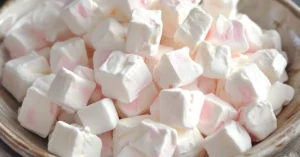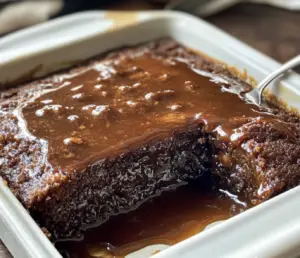Bake Salmon Sushi Recipe, a delicacy originating from Japan, has become immensely popular worldwide. Its delightful combination of fresh salmon, seasoned rice, and nori (seaweed) offers a burst of flavor in every bite. Crafting your salmon sushi at home is not only a rewarding culinary experience but also allows you to customize it according to your taste preferences. In this article, we’ll explore a step-by-step guide to baking delicious salmon sushi right in your Home.
Introduction to Salmon Sushi Recipe:
Salmon sushi, known as “sake nigiri” or “sake maki” in Japanese, is a traditional sushi roll featuring fresh salmon as the star ingredient. It’s not only a treat for the taste buds but also offers numerous health benefits. Making salmon sushi at home allows you to control the quality of ingredients and experiment with different flavors.
Benefits of Making Salmon Sushi at Home:
Making salmon sushi at home offers several advantages:
- Cost-Effective: Homemade sushi is more economical compared to dining out.
- Customization: You can tailor the ingredients to suit your preferences.
- Freshness: Using fresh ingredients ensures a superior taste and texture.
- Healthier Option: Homemade sushi allows you to control the amount of rice and condiments, making it a healthier choice.
Bake Salmon Sushi Recipe :
Before diving into the cooking process, let’s gather all the necessary ingredients:
Types of Salmon
When selecting salmon for sushi, opt for sushi-grade fish, which is safe to consume raw. Common varieties include:
- Sockeye Salmon
- Atlantic Salmon
- King Salmon
Rice and Seasoning
For sushi rice, you’ll need:
- Short-grain Japanese Rice
- Rice Vinegar
- Sugar
- Salt
Nori (Seaweed)
Choose high-quality nori sheets, preferably roasted for enhanced flavor.
Vegetables and Condiments
- Cucumber
- Avocado
- Soy Sauce
- Wasabi
- Pickled Ginger
Step-by-Step Guide to Making Salmon Sushi
Preparing the Rice
- Rinse the rice thoroughly until the water runs clear.
- Cook the rice according to package instructions.
- In a small bowl, mix rice vinegar, sugar, and salt.
- Gently fold the vinegar mixture into the cooked rice while it’s still warm.
Preparing the Salmon
- Ensure the salmon is sushi-grade and free of any bones.
- Slice the salmon into thin strips or cubes, depending on your preference.
Assembling the Sushi
- Place a nori sheet on a bamboo sushi mat.
- Spread a thin layer of sushi rice over the nori, leaving a small border at the top.
- Arrange the salmon slices or cubes along the bottom edge of the nori.
- Add your choice of vegetables or condiments.
- Roll the sushi tightly using the bamboo mat.
- Slice the sushi roll into bite-sized pieces using a sharp knife.
Tips for Perfect Salmon Sushi
To ensure your homemade salmon sushi turns out perfectly every time, consider the following tips:
- Choose Fresh Ingredients: Opt for the freshest salmon and vegetables available.
- Proper Rolling Techniques: Apply gentle pressure when rolling the sushi to prevent it from falling apart.
- Serving and Presentation: Garnish your sushi with sesame seeds, tobiko (flying fish roe), or thinly sliced scallions for an elegant presentation.
Variations and Additions
Experiment with different variations of salmon sushi to tantalize your taste buds:
- Spicy Salmon Roll: Add spicy mayo or chili flakes to the salmon filling for an extra kick.
- Salmon Avocado Roll: Pair the salmon with creamy avocado slices for a buttery texture.
- Tempura Salmon Roll: Incorporate crispy tempura-battered salmon for a delightful crunch.
Health Benefits of Salmon Sushi
Apart from its delectable taste, salmon sushi offers numerous health benefits:
- Omega-3 Fatty Acids: Salmon is rich in omega-3 fatty acids, which promote heart health and reduce inflammation.
- High Protein Content: Salmon is a lean source of protein, essential for muscle repair and growth.
- Low-Calorie Option: Compared to other sushi varieties, salmon sushi is relatively low in calories, making it suitable for weight-conscious individuals.
Discover the best ways to cook and enjoy Costco ground beef with our delicious recipes and cooking tips. Unlock the flavor potential of this versatile ingredient! : Costco Ground Beef
FAQs : Bake Salmon Sushi Recipe
Do you have to cook salmon for sushi?
When preparing sushi, it’s crucial to use high-quality, fresh fish. While traditional sushi involves using raw fish, including salmon, it’s essential to ensure that the fish has been properly handled and frozen to eliminate any potential parasites. However, if you’re unsure about the quality or safety of the salmon, it’s recommended to cook it before using it in sushi to avoid any health risks.
Where did sushi bake come from?
Sushi bake originated in the Philippines and quickly gained popularity worldwide. It combines elements of Japanese sushi with Filipino flavors, creating a unique and delicious dish. Sushi bake typically consists of cooked sushi rice mixed with various ingredients like mayonnaise, crab meat, and vegetables, topped with a layer of seasoned fish and baked until golden and bubbly.
How do you reheat sushi bake?
To reheat sushi bake, preheat your oven to 350°F (175°C). Place the sushi bake in an oven-safe dish and cover it with aluminum foil to prevent it from drying out. Bake for about 10-15 minutes or until heated through. You can also microwave individual portions for 1-2 minutes, but be careful not to overheat, as it can affect the texture of the dish.
How to make sashimi from frozen salmon?
To make sashimi from frozen salmon, start by thawing the salmon in the refrigerator overnight or under cold running water. Once thawed, use a sharp knife to slice the salmon thinly against the grain, ensuring smooth and clean cuts. Arrange the slices on a plate and serve immediately with soy sauce, wasabi, and pickled ginger for a traditional sashimi experience. It’s essential to use high-quality, sushi-grade salmon and maintain proper food safety practices when handling raw fish.
Conclusion: Salmon Sushi
Making your own salmon sushi at home is not only a delicious endeavor but also a deeply rewarding one. As you embark on this culinary journey, you have the opportunity to explore and experiment with flavors, textures, and presentations. Whether you’re a seasoned sushi enthusiast or a novice looking to expand your culinary repertoire, crafting homemade salmon sushi offers a sense of accomplishment and satisfaction like no other.
So why wait to dive into the world of homemade sushi? With fresh ingredients, the right techniques, and a dash of imagination, you can elevate your sushi-making skills and indulge in a truly unforgettable dining experience right in the comfort of your own home.



